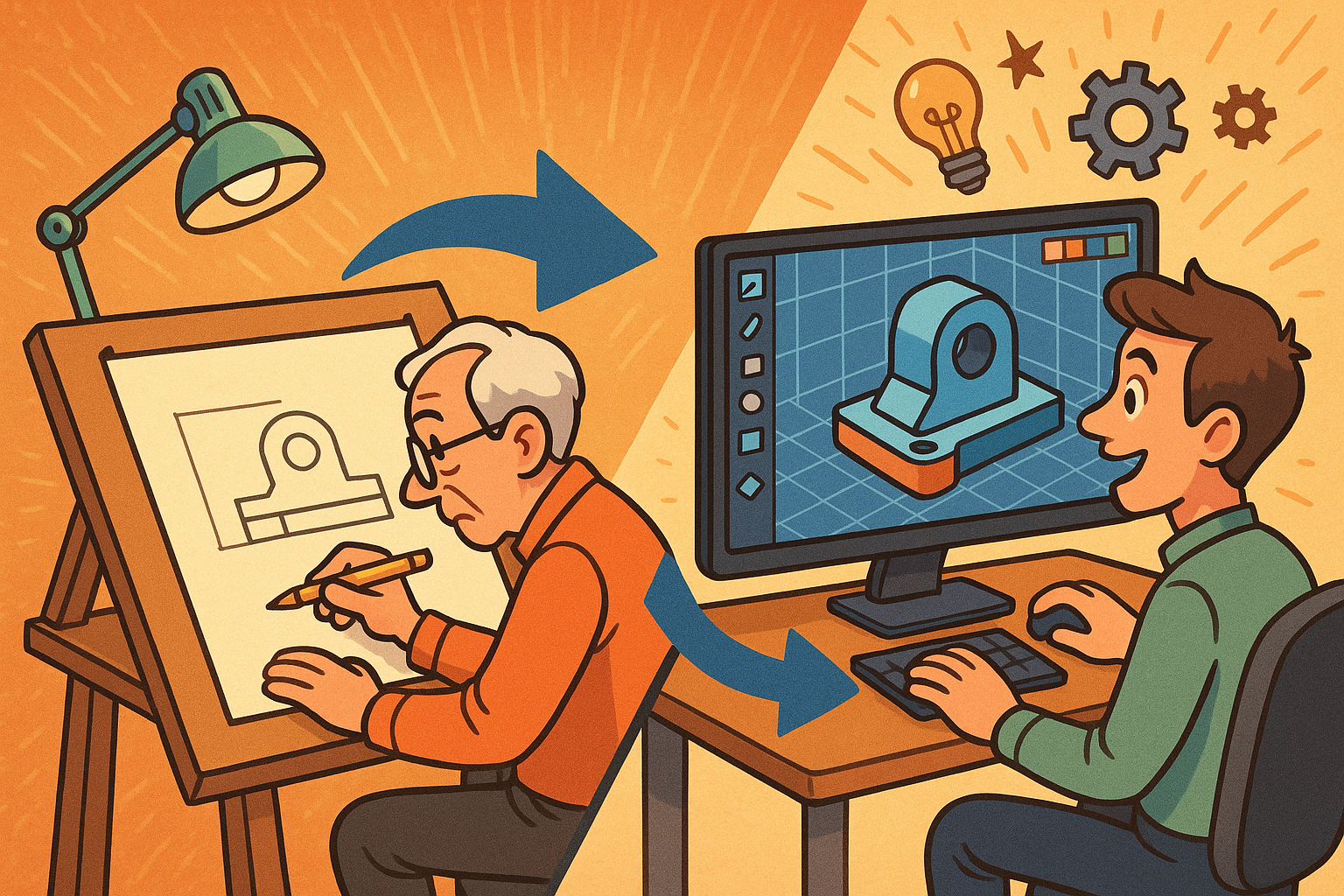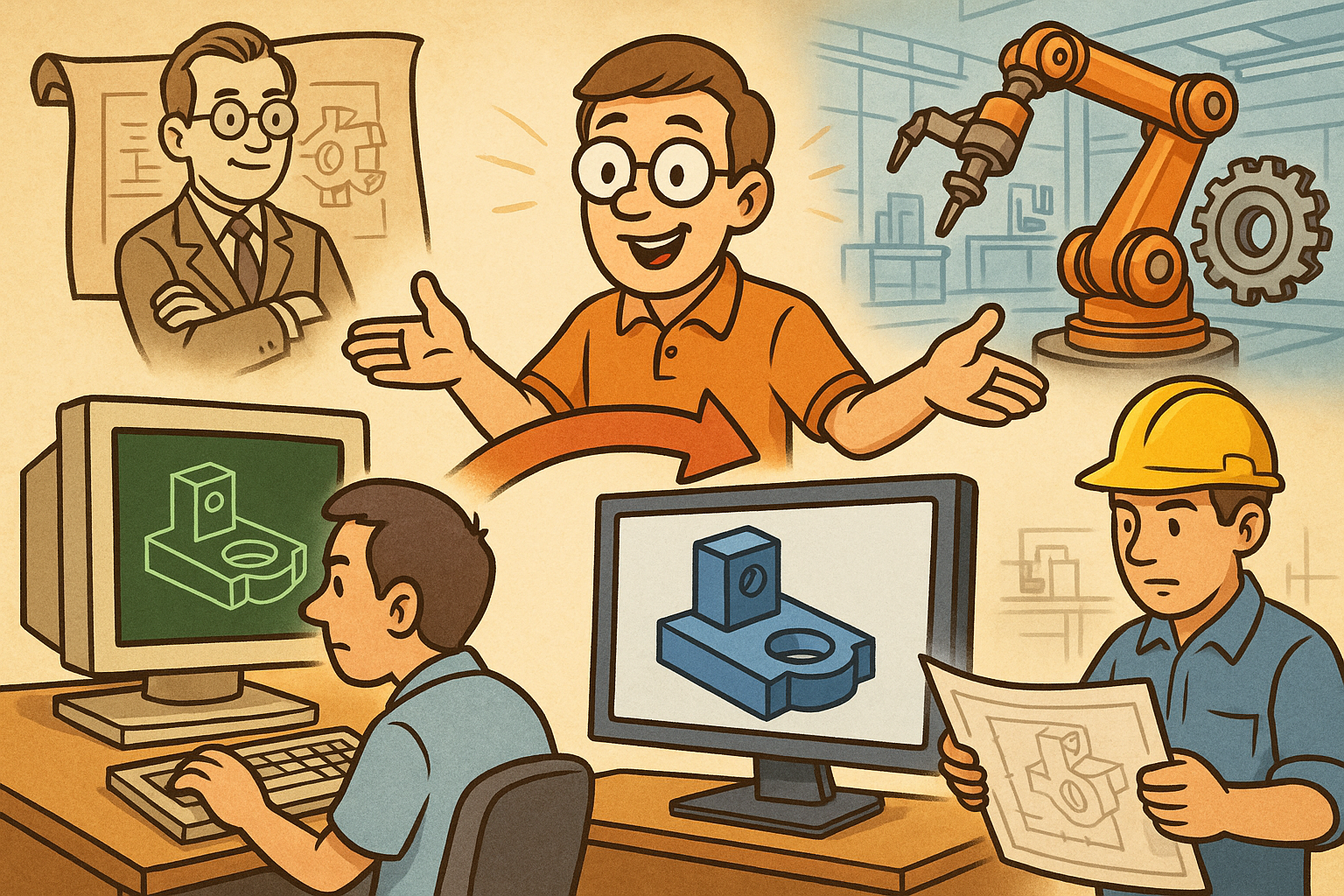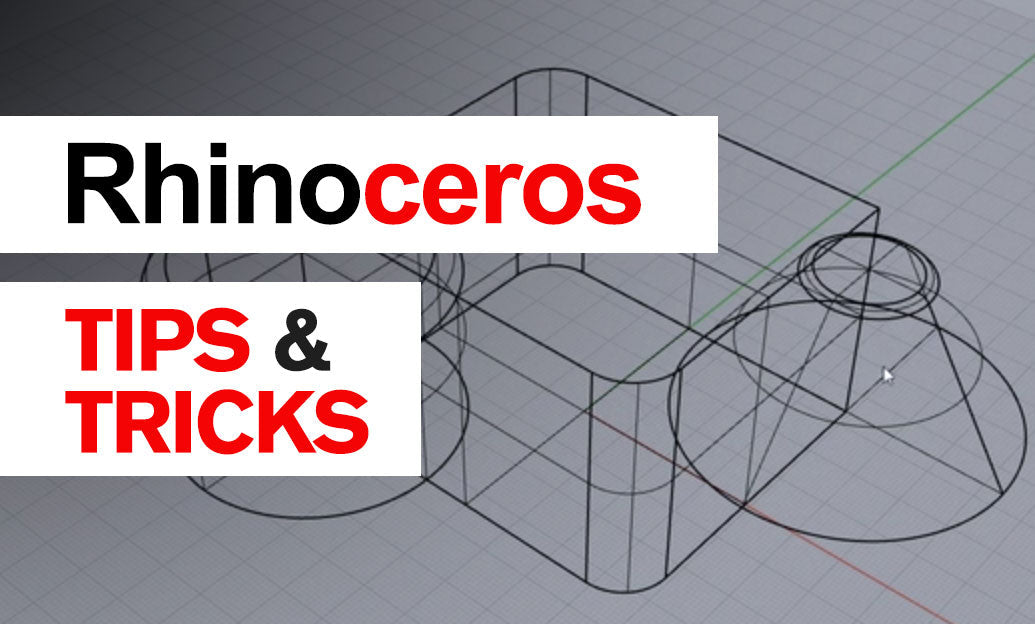Your Cart is Empty
Customer Testimonials
-
"Great customer service. The folks at Novedge were super helpful in navigating a somewhat complicated order including software upgrades and serial numbers in various stages of inactivity. They were friendly and helpful throughout the process.."
Ruben Ruckmark
"Quick & very helpful. We have been using Novedge for years and are very happy with their quick service when we need to make a purchase and excellent support resolving any issues."
Will Woodson
"Scott is the best. He reminds me about subscriptions dates, guides me in the correct direction for updates. He always responds promptly to me. He is literally the reason I continue to work with Novedge and will do so in the future."
Edward Mchugh
"Calvin Lok is “the man”. After my purchase of Sketchup 2021, he called me and provided step-by-step instructions to ease me through difficulties I was having with the setup of my new software."
Mike Borzage
Revolutionizing Design: The Evolution and Impact of Next-Generation CAD Software
October 25, 2025 14 min read


Next-Generation CAD Software Evolution
Overview of Evolution
The evolution of **next-generation CAD software** has been marked by a relentless pursuit of improved performance, greater accuracy, and enhanced user experience. Over the past decades, designers and engineers have witnessed the transition from basic drafting tools to powerful platforms that integrate simulation, analysis, and visualization capabilities within a single environment. Modern CAD solutions now harness advanced algorithms and data-driven processes that run alongside traditional computer-aided design tools, driving efficiency in design and manufacturing workflows. This transformation has also led to the integration of **advanced surface modeling** techniques, which allow the creation of complex geometries and fluid forms that were once difficult to render or optimize. In this evolution, industry leaders have recognized the importance of adaptive systems and smart software integration. The role of automation in reducing manual errors and streamlining workflows can no longer be understated, as CAD software now seamlessly bridges the gap between conceptual design and tangible products while ensuring precise control over intricate details. Moreover, these enhanced capabilities have become indispensable for industries that require high-performance simulation for projections of real-world applications, ensuring that every design factor is tested and perfected before prototyping.
Detailed Impact on the Industry
This significant progress in CAD design technology is largely based on the integration of innovative mathematical models and computational algorithms that underpin every modern design process. In today’s design milieu, the incorporation of robust, logic-driven frameworks means that designers can now experiment with more daring, complex geometries without compromising on accuracy or manufacturability. The tremendous strides in surface rendering, coupled with improvements in computational speed and memory management, have made it feasible to perform real-time simulations even on highly detailed models. Enhancements in smart modeling, such as automatic error detection, correction functionalities, and user-specific customization options, demonstrate the industry's determination to resolve historical challenges. Bulleted below are some core areas contributing to this evolution:
- Increased processing power that supports multiple concurrent operations.
- Integration of artificial intelligence to predict potential design challenges.
- Enhanced interoperability between different CAD modules ensuring a cohesive workflow.
Advanced Surface Modeling in Modern Workflows
Significance and Integration
As modern design workflows evolve, the role of **advanced surface modeling** has taken center stage. This technology is transforming the way designers approach freeform and organic structures by allowing an unprecedented level of precision and flexibility. At the core of these innovations is the seamless integration between realistic surface renderings and robust computational tools, which together enable the creation, manipulation, and refinement of complex geometry. When used in tandem with simulation and analysis tools, advanced surface modeling not only provides a visual representation of a product’s aesthetics but also gives insightful data on its performance under different conditions. This synergy supports the efficient iteration of designs, which is essential in industries where rapid prototyping and validation are key to staying competitive in dynamic global markets. The adoption of these advanced techniques ensures that every curve, smooth transition, and intricate surface detail is meticulously constructed and optimized for both performance and appearance.
Practical Considerations in Workflow Integration
The implementation of advanced surface modeling into daily design operations has provided tangible benefits such as the reduction of manual iterations and lower dependency on external simulation tools. The integration offers a unified process where a design moves effortlessly from conceptualization to verification, enabling designers to explore more creative solutions without being hampered by technical limitations. Several practical aspects contribute to the success of integrating surface modeling features:
- Real-time feedback on design modifications, allowing for immediate assessment of structural and aesthetic implications.
- Enhanced visualization tools that provide clear, high-fidelity images of the final products even during early development stages.
- Automation of routine tasks such as curvature continuity verification, which streamlines the iterative process.
Historical Challenges and the Imperative for Innovation
Traditional Limitations and Their Effects
Historically, traditional surface modeling technologies faced significant hurdles that often necessitated cumbersome workarounds and laborious manual processes. Designers frequently encountered issues concerning limited geometric control and the inability to maintain consistent curvature throughout surface transitions. Such limitations resulted in inefficient workflows and higher incidences of error-prone designs, particularly when trying to achieve complex forms or subtle aesthetic details. The rigidity in early CAD systems often forced design teams to choose between accuracy and design freedom, thereby stifling innovation. This situation impeded the possibility of rapid prototyping and made iterations a time-consuming affair. Consequently, the pressure to overcome these historical challenges eventually spurred the development and integration of more sophisticated technologies that are capable of addressing these longstanding issues while also unlocking new levels of design complexity.
Drivers for Innovation and Modern Advancements
The ongoing drive to improve design capabilities and streamline the manufacturing process has been a crucial factor behind the radical reinvention of surface modeling. Technological advancements, such as the incorporation of generative design and real-time simulation, are now revolutionizing what was once deemed impossible in the realm of digital design. With the integration of these powerful tools, engineers and designers are now able to push the boundaries of what is achievable by iteratively optimizing form and function with unparalleled precision. In modern applications, **advanced surface modeling** is not just a design feature; it is central to creating products that are safer, more efficient, and substantially more aligned with user requirements. Additionally, the evolution from 2D sketches to 3D models that can be interactively manipulated in a virtual space has redefined industry standards, enabling designers to resolve complexities early in the design process. The culmination of these innovations has led to a rich, dynamic environment where creativity and precision coalesce to produce groundbreaking products.
Precision and Flexibility: Curve and Complex Surface Manipulation
Advanced Curve Manipulation Techniques
Modern CAD software emphasizes the importance of precision and flexibility when manipulating curves and complex surfaces. These capabilities are fundamental to achieving the fluidity and detail required for next-generation design aesthetics. Advanced curve manipulation techniques allow designers to easily adjust the parameters of curves and surfaces, ensuring **curvature continuity** and smooth transitions throughout the model. In addition, the application of **intelligent edge blending** techniques further refines the detail by automatically optimizing the junctions between different surfaces, resulting in visually appealing and seamlessly integrated designs. This precision is particularly critical in projects that involve organic shapes and freeform styles, where the slightest discontinuity may disrupt the overall harmony of the design. With the aid of these advanced tools, the iterative process of refining a design becomes more efficient. Designers are empowered to explore unconventional forms while maintaining a high degree of control over every aspect of the shape.
Adaptive Tessellation for High-Performance Rendering
One of the groundbreaking innovations in modern CAD has been the introduction of adaptive tessellation. This feature is instrumental in enhancing real-time rendering performance without compromising on the quality of the design. By dynamically adjusting the number of geometric facets based on the area of interest, adaptive tessellation strikes a balance between detail and speed. This technology paves the way for **high-performance rendering** in interactive design environments, ensuring that large and complex models can be manipulated with minimal latency. The adaptability of tessellation not only improves visualization during the design phase but also supports more sophisticated simulation processes by providing a finely detailed mesh where necessary. The combination of precise curve manipulation and adaptive tessellation ensures that designers are no longer limited by hardware constraints and can push the boundaries of innovation in complex, detail-intensive projects. Key benefits include:
- Dynamic adjustment of surface detail in real-time.
- Optimized resource usage that minimizes lag and improves system responsiveness.
- Scalable performance for diverse applications ranging from conceptual design to advanced simulation.
Integration of Algorithm-Driven Tools
Generative Design Algorithms for Surface Optimization
One of the most exciting areas in modern design software is the integration of algorithm-driven tools, particularly those harnessing generative design algorithms for **surface optimization**. This innovative approach uses computational algorithms to explore a vast design space rapidly. Instead of relying solely on manual iteration, designers can input parameters and let the system automatically generate multiple design alternatives that meet the set criteria for performance, aesthetics, and manufacturability. Generative design is specifically useful when dealing with complex surfaces that need to exhibit high degrees of continuity and precision. These systems can analyze countless variations and propose the most promising configurations, which are then refined further by the design team. This integration significantly reduces the time required for design exploration and allows for a more comprehensive examination of potential solutions, ensuring that the final product is optimized for both function and form.
Automation and Error Checking in Surface Topology
Complementing generative design, advanced CAD software now incorporates automation for error checking in surface topology. These intelligent systems are capable of detecting inconsistencies in the continuity of the surfaces, such as mismatched curvature or abrupt transitions that could compromise the integrity of the design. By automating this verification process, designers receive real-time alerts and suggestions to correct potential issues before they become critical, thereby enhancing efficiency and reducing costly rework during the manufacturing phase. The key features of this automated system include:
- Immediate identification of geometric anomalies that deviate from predefined standards.
- Automatic correction routines that adjust surface parameters to restore continuity.
- Comprehensive reporting tools for detailed analysis and further optimization.
Enhanced User Interfaces and Customization
Intuitive Controls and Real-Time Feedback
The evolution of CAD software has led to the development of highly intuitive user interfaces that simplify the process of interacting with and manipulating complex surface geometries. Modern platforms leverage **intuitive controls and real-time feedback** to provide designers with a more immersive and responsive experience. This is achieved through streamlined navigational elements, context-sensitive menus, and interactive widgets that allow for precise adjustments on the fly. Real-time feedback is particularly significant for assessing design modifications instantly, enabling professionals to visualize changes rapidly and make informed decisions. The interactive nature of these interfaces reduces the steep learning curve often associated with traditional CAD systems, thereby allowing new users, as well as seasoned professionals, to harness advanced functionalities without extensive retraining. The integration of these intuitive features helps bridge the gap between design intent and the actual output, ensuring that every modification is accurately reflected in the model. Additionally, dynamic visualization techniques further enhance the overall usability and empower designers to collaborate more effectively throughout the design process.
Customizable Toolsets for Specific Industry Needs
A significant advantage of modern CAD platforms is their ability to offer customizable toolsets that cater to the unique requirements of various industries. This flexibility allows organizations to tailor their software environment to match the specific needs of their projects, be it in automotive design, aerospace engineering, consumer product design, or architectural development. Customizable interfaces enable users to create shortcuts, configure preferences, and set up workspaces that streamline daily tasks and reduce the need for manual interventions. Such personalization is made possible by modular design principles, which allow third-party integrations and custom script support to extend functionality even further. In practice, these toolsets result in a dramatic reduction in design cycle times and substantially lower the incidence of human error. Key elements of these customizable toolsets include:
- User-defined macros that automate repetitive operations.
- Configurable dashboards that provide a quick glance at essential parameters and project metrics.
- Interoperability features that allow seamless integration with other specialized software solutions.
Boosting Design Productivity and Reducing Manual Iterations
Accelerated Design-to-Prototype Cycles
The integration of **advanced surface modeling** technologies into modern CAD platforms has had a profound impact on design productivity. Through the incorporation of algorithm-driven tools and intelligent automation, designers are now capable of significantly reducing the number of manual iterations typically required to finalize a concept. The accelerated design-to-prototype cycle is a major advantage as it allows for rapid experimentation and immediate validation of design ideas. This process not only shortens the time-to-market for innovative products, but it also minimizes the risk of errors while optimizing manufacturing workflows. Modern CAD systems reduce the cognitive load on designers, allowing them to focus on creative problem-solving and value-added design improvements rather than spending excessive time on repetitive, error-checking tasks. The seamless integration of simulation and analysis tools further enhances the design process, as potential performance issues can be identified and addressed early in the development stage. Key benefits that contribute to this productivity boost include:
- Streamlined workflows that automate routine design checks.
- Real-time simulation feedback ensuring design adjustments are effective immediately.
- Integration of multi-physics analysis within the design environment for holistic evaluation.
Enhancements in Simulation and Analysis Integrated with CAD
Another hallmark benefit of modern CAD systems is the seamless integration of simulation and analysis tools into the design environment. This integration empowers designers to evaluate performance and validate surface integrity in real time, thereby creating a more iterative and responsive workflow. Complex geometries that once required separate simulation packages can now be dynamically analyzed as part of the design phase, ensuring that every modification is backed by quantitative data. This capability is particularly vital in industries where safety, ergonomics, and precision are paramount. The intelligent synchronization between design modifications and performance analysis means that every curve, edge, and surface can be optimized for both aesthetic appeal and functional reliability. As designers collaborate across disciplines, the convergence of design and simulation tools fosters an environment where every iteration is informed by rigorous performance criteria. The benefits of this approach are further accentuated by:
- Unified platforms that eliminate the friction between design and analysis stages.
- Accelerated error detection leading to early mitigation strategies.
- Data-driven decision making that enhances the overall quality and robustness of the final product.
Applications Across Industries
Optimizing Aerodynamics and Ergonomics for Automotive and Aerospace
The transformative impact of advanced CAD functionalities extends well beyond conventional design practices, finding critical application in sectors such as automotive and aerospace. In these industries, optimizing surface geometries is not only a matter of visual aesthetics but also a crucial factor in improving performance metrics such as aerodynamics and ergonomics. The ability to finely adjust curves and surface transitions is central to designing vehicles and aircraft that provide superior efficiency, safety, and operational performance. Advanced surface modeling enables engineers to reduce drag, enhance fuel efficiency, and meet stringent regulatory requirements. Industrial applications further leverage simulation data to predict airflow dynamics, structural responses, and stress distributions under various operating conditions. This comprehensive approach helps in ensuring that every design modification aligns with the broader performance criteria required by these high-stakes industries. In practical terms, the following bullet points highlight key areas where advanced surface modeling is indispensable:
- Aerodynamic optimization that minimizes resistance and improves energy consumption.
- Ergonomic design improvements to enhance user comfort and safety.
- Performance simulation that predicts and validates the structural integrity of novel designs.
Achieving Aesthetic Excellence in Consumer Products and Industrial Design
Beyond the realms of high-performance engineering, advanced surface modeling is making a decisive impact on consumer products and industrial design sectors. In these areas, visual appeal, tactile satisfaction, and ergonomic functionality converge to meet market expectations. Designers now have the tools to craft products that offer both aesthetic excellence and optimal performance. The incorporation of fine-tuned surface manipulations ensures that every curve and angle contributes to an overall design language that resonates with modern consumer sensibilities. Innovations in surface refinement techniques have led to products that are not just functional but also convey a sense of sophistication and quality. These benefits are brought into sharp focus when designers can see real-time changes and simulate different scenarios to ensure their products can withstand practical usage conditions. The integration of these methods encourages a more iterative process, where design excellence is paired with advanced functional analysis. Benefits that drive success in these industries include:
- Enhanced visual appeal through refined surface continuity and texture.
- Optimized ergonomics that ensure user-friendly interfaces and comfort.
- Streamlined production processes that reduce prototyping time and manufacturing costs.
Integration with Other Design Platforms and Digital Workflows
Cross-Disciplinary Collaboration via Digital Twins
A profound advantage of modern CAD technologies is their facilitation of cross-disciplinary collaboration using digital twins. Digital twins — highly accurate, virtual representations of physical objects — are emerging as essential tools in the realm of integrated design workflows. By merging physical data with digital models, engineers and designers can simulate intricate interactions and optimize various aspects of a product’s lifecycle, from conception through to production and post-manufacturing analysis. This seamless data exchange enhances the accuracy of simulations, enabling real-time performance assessments and iterative improvements during the design phase. The benefits of establishing a robust digital twin ecosystem are manifold: it enables disparate teams to interact within the same environment, encourages a holistic view of the project’s lifecycle, and ultimately enhances decision-making processes by providing a single source of truth for design data. Some key elements driving these collaborative advantages include:
- Unified data models that integrate inputs from different simulation and design tools.
- Real-time communication channels between teams ensuring rapid feedback and refinements.
- Integrated performance analysis that bridges virtual simulations with physical testing data.
Bridging CAD with Additive Manufacturing Technologies
The convergence of CAD with additive manufacturing technologies represents another leap forward in facilitating a streamlined design-to-production process. By directly integrating design software with 3D printing and rapid prototyping systems, engineers are able to seamlessly translate their digital models into physical components. This direct bridge between digital design and manufacturing offers significant benefits such as reduced lead times, lower prototyping costs, and improved overall accuracy in reproducing complex details. Advanced CAD systems now include automated verification tools that pre-check model integrity, ensuring compatibility with additive manufacturing processes. This enables a more robust transition from virtual design to real-world application, minimizing discrepancies and rework during production. Such systems are particularly invaluable for industries looking to capitalize on rapid prototyping as a means to refine designs continuously. Key improvements in this integrated approach include:
- Synchronized data exchange between design and fabrication systems.
- Automated feature recognition that prepares models for additive manufacturing.
- Optimized slicing algorithms ensuring accurate reproduction of surface details.
Conclusion: Transformative Benefits and Future Trends
Recap of CAD Advancements and Benefits
In summary, the advances in next-generation CAD software—particularly through the incorporation of robust and **advanced surface modeling** tools—have fundamentally transformed the design landscape. These improvements in precision, efficiency, and integration have bridged the gap between creative design and practical engineering, offering tools that streamline workflows, minimize errors, and facilitate deeper collaboration across interdisciplinary teams. The adoption of generative design algorithms, adaptive tessellation, and automated error checking has allowed designers to achieve levels of form and function previously unattainable with traditional CAD systems. By tackling historical limitations and introducing intuitive, customizable user interfaces, these platforms have positioned themselves as indispensable instruments in industries as diverse as automotive, aerospace, consumer products, and industrial design. Consequently, the fusion of simulation, real-time feedback, and digital twin technology has accelerated the transition from concept to production, ensuring that each design is optimized, robust, and production-ready.
Future Trends and Final Thoughts
Looking ahead, the continued evolution of CAD software is set to further embrace emerging technologies that integrate artificial intelligence, machine learning, and cloud-based data analytics to refine design processes even more. The future promises deeper integration between CAD systems and additive manufacturing, augmented reality interfaces for on-the-fly modification, and even more sophisticated algorithms that not only predict potential areas of improvement but also autonomously suggest design variants to optimize performance. The innovative journey of advanced surface modeling is far from over, and its potential to transform product development and engineering computation remains expansive. For organizations across the spectrum, embracing these cutting-edge tools is more than just adopting new software—it represents a transformational shift in how design processes are approached, managed, and executed. By leveraging the power of technology to overcome historical challenges, industries can pave the way for a future where creativity, efficiency, and precision unite to create products and structures that embody the pinnacle of modern design excellence.
Also in Design News

Design Software History: The Transformational Impact of SolidWorks on Mechanical Design Software History and Its Legacy in Modern Engineering Practices
October 25, 2025 8 min read
Read More
Rhino 3D Tip: Optimizing Workflow Efficiency in Rhino 3D for Enhanced Design Outcomes
October 25, 2025 3 min read
Read More
Cinema 4D Tip: Creating Dynamic Animated Infographics in Cinema 4D
October 25, 2025 2 min read
Read MoreSubscribe
Sign up to get the latest on sales, new releases and more …


